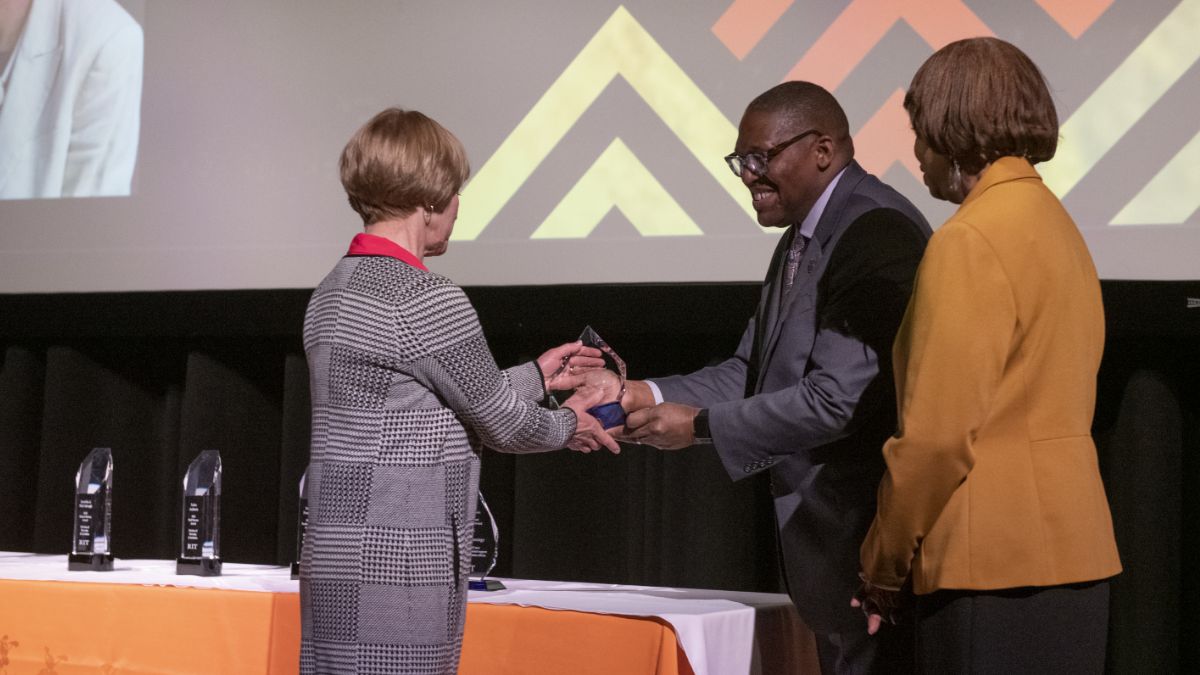Pillar III: Faculty and Staff Recruitment, Retention, and Advancement

Action Plan for Race and Ethnicity, Pillar III:
Faculty and Staff Recruitment, Retention, and Advancement
- RIT/
- Action Plan for Race and Ethnicity/
- Pillar III: Faculty and Staff Recruitment, Retention, and Advancement
The five Broad Initiatives of this Pillar and their supporting action steps derive from the following vision that was crafted by the members of this working group.
RIT faculty and staff will reflect the excellent and diverse global community we serve by way of intentionally recruiting, retaining and advancing faculty, staff and administrators who reflect the diversity of the global community and who expect, value and support an institution destined to impact the greater good through an inclusive climate, collaborative engagement, innovative approaches, and social consciousness.
Again, these initiatives and action steps are not new to RIT: they restate and extend a number of critical goals contained in the RIT Strategic Plan, Greatness Through Difference: 2018-2025.
The RIT Strategic Plan, 2018 – 2025, calls for the following in goals 5 and 6:
- Goal 5: “Continue to diversify the faculty and administration by gender, race [emphasis added], and nationality with an emphasis on increasing the number and percent of female faculty in STEM fields and AALANA faculty [emphasis added] in all fields.”
- Goal 6: “Hire, promote, and retain an increasingly diverse [emphasis added] and outstanding staff in numbers that are commensurate with the size of the faculty and student body.”
Again, no changes are recommended in the current strategic plan goals; however, the initiatives that follow contain specific strategies in support of these goals.
_______
Broad Initiative I:
Create and support formal structures, broader engagement in and accountability for Diversity, Equity and Inclusion (DEI) work (e.g., committees, governance involvement, dedicated staff diversity-related positions, appraisals, etc.)
Action Step I.1:
Employ intentional and comprehensive efforts to incorporate and reflect DEI work across all constituencies including requiring DEI related information/goals in performance appraisals, plans of work, annual reports, etc.
Action Step I.2:
Comprehensively review all systems, policies, procedures for systemic inequity. Focus first on examining, revising, and enhancing advancement practices for both staff and faculty to ensure equity and inclusion. Include mentoring and talent development programs.
Action Step I.3:
Recognize the valuable contributions of AALANA faculty and staff, support and make possible the participation in shared governance (Staff Council and Academic Senate) and involvement in other DEI activities by adjusting workflow and/or providing other supports.
_______
Broad Initiative II:
Examine, revise and enhance current hiring practices and outreach for both staff and faculty with an eye towards expanding our ability to be creative and opportunistic in the way we approach inclusive hiring.
Action Step II.1:
Create dedicated position(s) focusing on outreach and recruitment of diverse staff and parallel ongoing initiatives from the Office of Faculty Diversity and Recruitment (OFDR).
- Supporting Action Step II.1.a: NTID will create specialist resources for their communities.
Action Step II.2:
Enhance personnel and funding support for the Office of Faculty Diversity and Recruitment that allows a greater range of innovative outreach initiatives aimed at prospective AALANA faculty (i.e., Black/African American, Indigenous, and other people of color).
- Supporting Action Step II.2.a: Ensure dedicated personnel to better focus recruitment and retention.
- Supporting Action Step II.2.b: Review the FFCEP structure and consider funding to invite a larger cohort of scholars.
Action Step II.3:
Institute/revise search and educational processes that support inclusive, bias-free decisions with attention given to job description development, placement of the job advertisements, inclusive search committee memberships, interview best practices, selection of finalists, and hosting campus interviews.
- Supporting Action Step II.3.a: Actively work towards diversifying membership on every search committee.
- Supporting Action Step II.3.b: Require current Inclusive Hiring Training for all search chairs and committee members.
Action Step II.4:
Build relationships with Historically Black Colleges and Universities (HBCUs), Hispanic Serving Institutions (HSIs), and Native American Scholars Initiative (NASI) universities, and identify opportunities for collaboration and partnership such as faculty exchanges and other arrangements that may promote dual degree programs.
Action Step II.5:
Accelerate establishment of a permanent Strategic Hire Fund to enable target of opportunity hires that would also support, among other RIT hiring initiatives, proactive recruiting of outstanding AALANA faculty, both within and outside standard searches.
Action Step II.6:
Create a database, similar to OFDR’s Scholars’ Network for faculty candidates, to allow tracking of potential ALANA staff candidates.
_______
Broad Initiative III:
Identify and deploy methods for strengthening AALANA faculty and staff sense of belonging to the RIT community.
Action Step III.1:
Examine and revise onboarding processes and materials to support new faculty and staff in finding community at RIT (outside of HR orientation as it currently stands). A holistic assessment will address the need for unique community resources (e.g., schools, health care, hair salons, places of worship, affinity groups, etc.), and underscore the importance of incorporating the entire family into the RIT relationship.
Action Step III.2:
Leverage partnerships—Upstate New York College Collaboration (UNYCC), Rochester Area Colleges (RAC), Higher Education Recruitment Consortium (HERC), etc.—to support dual career hires. Develop relocation information program for both faculty and staff hires.
Action Plan Pillars
- Pillar I: Leadership, Culture, and Communication
- Pillar II: African American, Latino American (LATINX), Native American (AALANA) Student Enrollment and Success
- Pillar III: Faculty and Staff Recruitment, Retention, and Advancement








